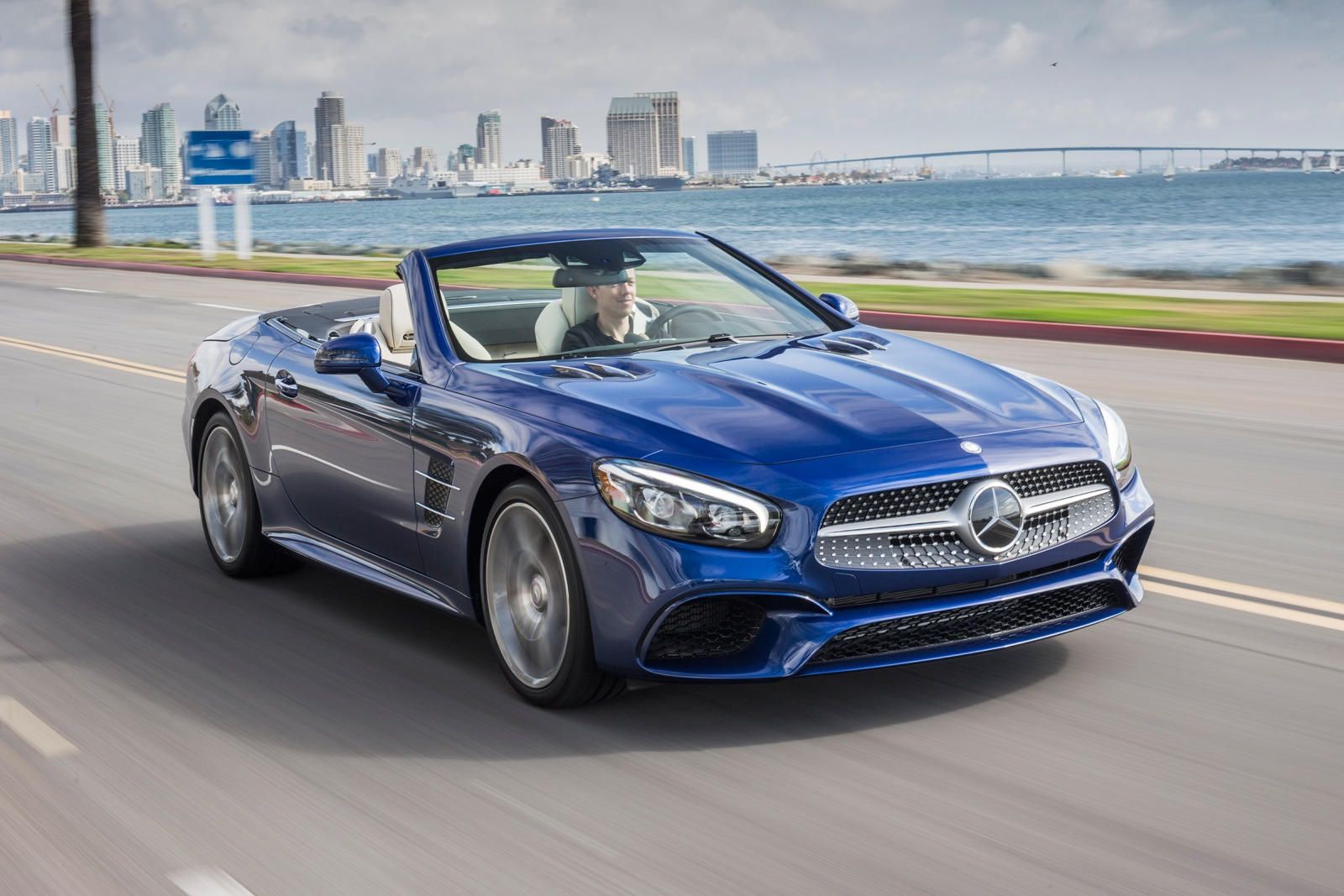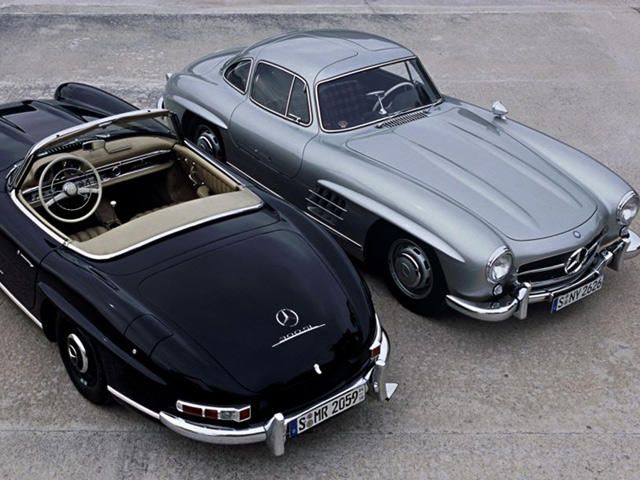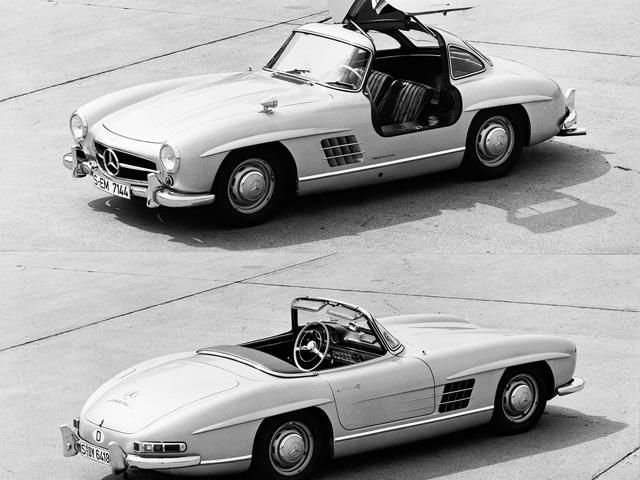
Two individuals, whose names are neither Benz nor Daimler, influenced the fate of Daimler immensely and both of them were able salesmen. The first one was Emil Jellinek, whose story belongs in another era. The second was Maxi Hoffman, Daimler's US distributor, who promised Daimler's top executives that he will be able to sell 1,000 units of the 300 SL in the US. In doing so, he forced them to consider re-engineering that successful race car into a road car.
The result of Hoffman's request were three models based on two platforms: the 300 SL Gullwing (aka the Coupe), the 190 SL open-top, and the 300 SL Roadster. The first two debuted at the International Motor Sport Show in New York in 1954. The Gullwing Coupe was an advanced development of the W194 racing chassis; its 3.0-liter 215hp engine was much stronger the W194's engine due to the installation of a mechanical fuel injection system, the first of its kind in a passenger car. It was a real supercar with a top speed of 155 mph. Its aerodynamic shape was an imitation of the original SL combined with its combat and racing capabilities as well.
It was heavier, due to the need for passengers' convenience items and a more extensive interior finish. On the road, it had a tendency to oversteer under acceleration. Since no electronic speed limiter was available, sometimes a note with a recommended 120 mph top speed could be found stuck to the dashboard. In just three years, 1,400 300 SL Coupes were sold before it was replaced by the roadster (W198 II) on the same spaceframe chassis, but adapted to standard doors and without the fixed head cover. It was propelled by the same 3.0-liter 215hp engine.
The headlamps received a rectangular shape in a portrait position. The hood was decorated as before with two, longitudinal bulges; a retractable roof was installed, though from 1958, a removable hard-top version was also available.


